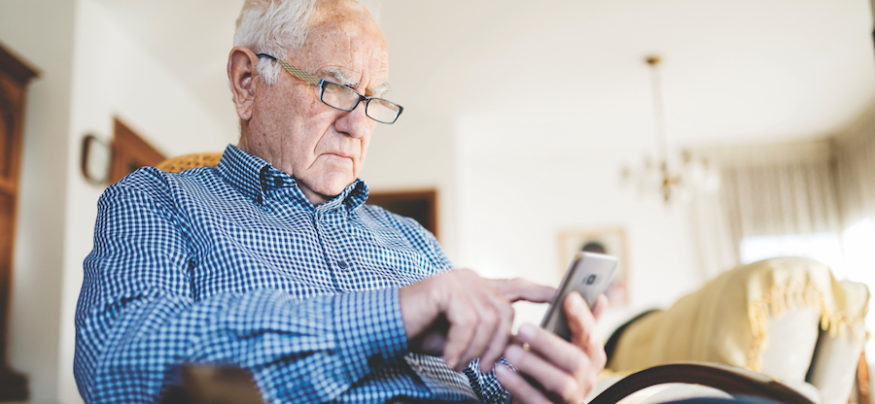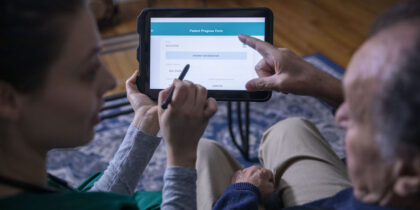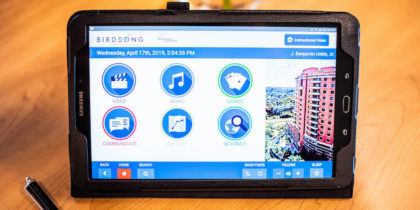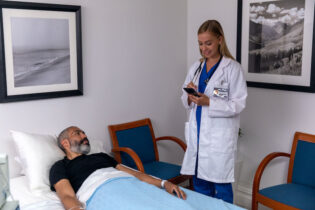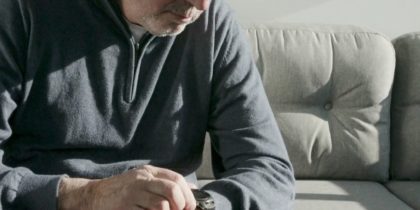This News Insight from Samsung Networks examines the application of Internet of Things technology to the treatment of Alzheimer’s disease. Virtual reality is another technology improving outcomes for patients with dementia. —Samsung Insights editorial team
According to the alz.com, Alzheimer’s disease is the most common form of dementia. Today, 1 in 10 Americans over the age of 65 (or 5 million people) are living with Alzheimer’s. That number is expected to rise to 16 million by 2050.
Due to the progressive memory loss, one of the greatest threats to someone suffering from Alzheimer’s disease is wandering. In fact, 60% of individuals diagnosed will become lost and disoriented at some point, often in their own neighborhood. This can lead to threats from weather exposure and traffic, not to mention someone who might take advantage of those less fortunate. Unfortunately, if the person with Alzheimer’s is not found within 24 hours, there’s a 50% chance they will suffer a serious injury or possibly death.
But there are IoT devices that can help keep track of patients so their chances of wandering off are less likely.
Motion Sensors
Safe zones can be set up using motion sensors that alert caregivers if patients wander outside of the zone. A simple but effective sensor is made by MESH. With a detection area of 2-3 meters, the small domino-sized block can be placed next to doors and alert caregivers if anyone walks into its active range.
Pressure Switches
When Kenneth Shinozuka was 15 years old, he invented a device to help track his grandfather’s night-time wanderings. The SafeWander Sock Sensor is a small pressure sensor that attaches discretely to the bottom of patients’ socks. When they step, an alert is sent to the caregiver’s smartphone and the wandering is recorded for further study. Shinozuka has since developed the SafeWander Sensor and Gateway that attaches easily to pajamas and can be monitored anywhere. Similar to the Sock Sensor but larger in scale, wireless remote alarm pads can also send alerts if a patient gets out of bed.
Create a Successful VR Pain Management Program
Your roadmap to planning, executing and measuring the impact of your VR pain management program. Download Now
GPS Tracking
Using smartphone technology, the GPS Smart Sole is a hidden, wearable tracking device that slips into a patient’s shoes. Using a cellular data service plan, the GPS Smart Sole sends location updates every five minutes and charting them on a map. Designated geozones can be established and if the patient leaves the zone, an alert is sent via email and text with the last reported location.
Fitness Trackers
Fitness trackers like Fitbit aren’t just for counting steps and calories. They can also monitor a patient’s sleep patterns. Tracking light and deep sleep cycles can help caretakers understand what’s happening at night. Irregular sleep patterns can lead to further memory loss and nighttime wandering.
While there’s no cure for the disease, there are IoT devices to help keep people with Alzheimer’s safe from wandering into dangerous situations. However, even with these safeguards in place, individuals with the disease should register with MedicAlert with Alzheimer’s Association Safe Return.
Explore cutting-edge healthcare technology in more depth by checking out our full line of healthcare solutions.
